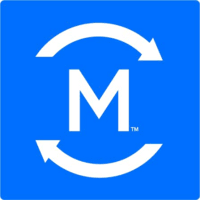 Phone spam, aka robocalls, is as much a nuisance to businesses as it is to any individual that just sat down to the dinner table. This was true in 2010 when Marchex, a leader in Conversational Analytics, introduced Clean Call, a service that used proprietary technology to detect and block unwanted incoming calls from telemarketers. It was part of a suite of analytic services that Marchex provided to companies who used digital and traditional advertising media to stimulate traffic to their telephone numbers. Since often pay on a per-call basis for incoming calls, the value of eliminating unwanted and unprofitable calls was easily quantifiable.
Phone spam, aka robocalls, is as much a nuisance to businesses as it is to any individual that just sat down to the dinner table. This was true in 2010 when Marchex, a leader in Conversational Analytics, introduced Clean Call, a service that used proprietary technology to detect and block unwanted incoming calls from telemarketers. It was part of a suite of analytic services that Marchex provided to companies who used digital and traditional advertising media to stimulate traffic to their telephone numbers. Since often pay on a per-call basis for incoming calls, the value of eliminating unwanted and unprofitable calls was easily quantifiable.
During the following nine years, spammers have become more sophisticated, using automated speech resources to generate calls at super-human scale. No live operator need be on duty. Marchex’s update to Clean Call responds to unprecedented volumes of calls with a system that combines supervised machine learning (ML) with a home-grown voice biometrics (VB) engine. Out of the box, the system is capable of blocking known robocallers, but that is just the beginning. Under human supervision, It can be quickly trained to recognize new sources of unwanted calls and associate members of those black lists with specific characteristics, including discriminating between humans and robovoices.
Marchex calls its innovation “adaptive robocall blocking.” Its customers are already blocking millions of calls to clients using the original Clean Call. Going forward, by combining VB and elements of AI, will provide further cost savings by detecting robocall newbies and using existing resources to classify them to be blocked in the future. The volume of this kind of phone spam is growing explosively. Marchex cites a 57% growth rate in 2018 over 2017 levels. That level of growth implies a growing number of sources to accompany new use cases and volumes. Thus the adaptive approach should be well-received by businesses that rely on media-stimulated, inbound calls.
The approach augments the existing Clean Call offering and, for those who wonder, is complementary to the mobile carrier endorsed approach to reducing robo-calls, called STIR/SHAKEN, which is focused more on “anti spoofing” of phone numbers. STIR is an acronym that stands for “Secure Telephone Identity Revisited” and it is combined with SHAKEN (Secure Handling of Asserted information using toKENs) to provide a mechanism by which a telephone company can provide high confidence that an inbound call originates from the number that is displayed on a phone or agent screen based on Caller ID or Automatic Number ID (ANI), respectively.
Clean Call picks up (or doesn’t pick up) where STIR/SHAKEN leaves off. The bad actors who generate billions of calls have demonstrated great proficiency in spoofing originating numbers. For the calls that get through, Clean Call can detect the attributes that coincide with robocalls and tag them to be blocked in the future based on those attributes, including characteristics of the spoken words. It is a use case for Conversational Analytics that has explicit business value and should generate high levels of interest from businesses of all sizes that are evaluating applications for machine learning, speech analytics and voice biometrics have a direct impact on their day-to-day business.
Categories: Intelligent Authentication

 Getting It Right: What AI Agents Actually Mean for Customer Support (Webinar)
Getting It Right: What AI Agents Actually Mean for Customer Support (Webinar)  Beyond the Basics: How AI Is Transforming B2B Sales at TP
Beyond the Basics: How AI Is Transforming B2B Sales at TP  Voice AI Agents Redefine CX: Trends, ROI, and Strategies for 2025
Voice AI Agents Redefine CX: Trends, ROI, and Strategies for 2025  Why Voice AI Is Foundational for Enterprise Innovation (Webinar)
Why Voice AI Is Foundational for Enterprise Innovation (Webinar)